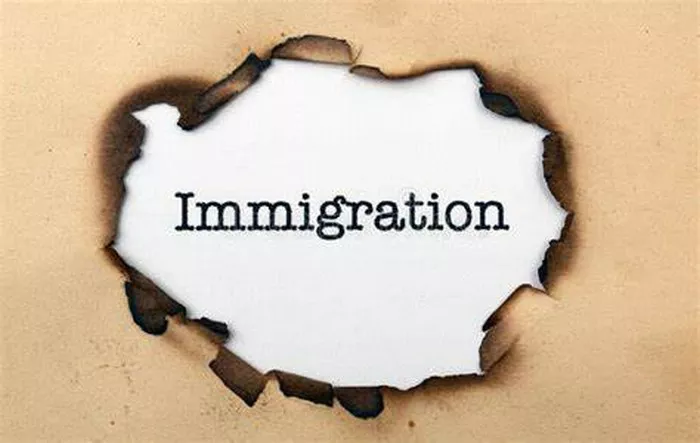Immigrating to a new country can be a complex process, and understanding your immigration status within that country is crucial for various aspects of your life, from employment to access to social services. Whether you’re a temporary resident, a permanent resident, or seeking citizenship, knowing your immigration status is essential for navigating legal requirements, rights, and responsibilities. In this guide, we’ll explore the different types of immigration statuses, how to determine your status, and where to find assistance if you’re unsure or need clarification.
Types of Immigration Status
Immigration statuses can vary widely depending on the country and its immigration laws. However, there are some common categories that many countries use to classify immigrants:
1. Visitor or Tourist Visa: This type of visa allows individuals to enter a country for a temporary period, typically for tourism, visiting family, or business purposes. Visitor visas usually have a limited duration, and holders are not permitted to work or engage in other activities not specified in the visa conditions.
2. Student Visa: Students who wish to study abroad often obtain a student visa, which permits them to reside in the host country for the duration of their studies. Student visas may have restrictions on working hours or types of employment allowed.
3. Work Visa or Permit: Individuals seeking employment in another country may apply for a work visa or permit. These visas are usually tied to a specific job or employer and may have conditions regarding the duration of employment and the type of work permitted.
4. Permanent Resident Status: Permanent residency grants individuals the right to live and work in a country indefinitely. Permanent residents typically enjoy many of the same rights and benefits as citizens, such as access to healthcare and education, but may have some restrictions, such as voting rights.
5. Citizenship: Citizenship is the highest form of immigration status, granting individuals full rights and responsibilities within a country, including the right to vote and hold public office. Citizenship is often obtained through birthright, descent, or naturalization.
Determining Your Immigration Status
Determining your immigration status can sometimes be confusing, especially if you have multiple visas or permits or if your status has changed over time. Here are some steps you can take to clarify your immigration status:
1. Review Your Documents: Start by reviewing any immigration documents you have, such as visas, permits, or residency cards. These documents should clearly indicate your current immigration status, the conditions attached to that status, and the expiration date, if applicable.
2. Check with Immigration Authorities: If you’re unsure about your immigration status or have questions about your documents, contact the immigration authorities in your host country. They can provide guidance and assistance in understanding your status and any steps you need to take to maintain or change it.
3. Consult an Immigration Lawyer: If you’re facing complex immigration issues or need legal advice, consider consulting with an immigration lawyer. A lawyer can review your situation, explain your rights and options, and help you navigate any legal processes or challenges you may encounter.
4. Update Your Status Regularly: Immigration laws and regulations can change over time, so it’s essential to stay informed about any updates or changes that may affect your immigration status. Make sure to renew your visas, permits, or residency cards before they expire to avoid any lapses in your status.
5. Keep Records: Keep copies of all your immigration documents, including visa approvals, entry stamps, and residency cards, in a safe and easily accessible place. These records can be valuable if you ever need to prove your immigration status or apply for additional benefits or services.
Resources for Assistance
If you’re struggling to determine your immigration status or need assistance with immigration-related issues, several resources are available to help:
1. Immigration Helplines: Many countries have immigration helplines or hotlines that you can call for assistance with immigration questions or concerns. These helplines are staffed by trained professionals who can provide information and guidance on immigration matters.
2. Immigrant Advocacy Organizations: There are numerous nonprofit organizations and advocacy groups that provide support and assistance to immigrants, including help with understanding immigration laws, navigating the immigration process, and accessing resources and services.
3. Embassies and Consulates: Your country’s embassy or consulate in your host country can be a valuable resource for information and assistance with immigration issues. Embassy staff can provide consular services, such as issuing passports and visas, and may also offer guidance on immigration matters.
4. Community Legal Clinics: Many communities have legal clinics or organizations that offer free or low-cost legal services to immigrants. These clinics can provide advice and assistance with immigration-related issues, such as applying for visas, renewing residency permits, or resolving immigration disputes.
Conclusion
Understanding your immigration status is essential for navigating life in a new country successfully. By familiarizing yourself with the different types of immigration statuses, knowing how to determine your status, and accessing available resources for assistance, you can ensure that you comply with immigration laws, protect your rights, and access the services and benefits you’re entitled to as an immigrant. If you ever have questions or concerns about your immigration status, don’t hesitate to reach out to immigration authorities or seek assistance from qualified professionals who can provide guidance and support.


